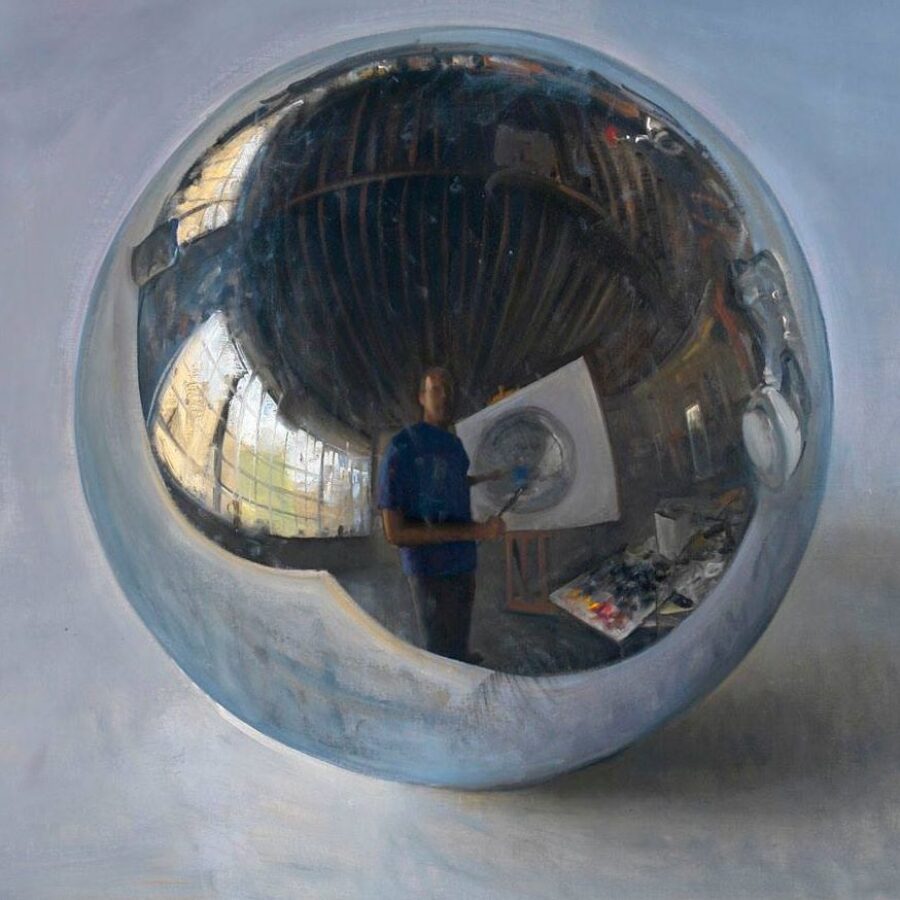Duane Keiser’s artistic practice presents a compelling alternative to the art world’s focus on grand, monumental works. He pioneered the “A Painting a Day” movement, carving out a unique niche by elevating the mundane and challenging traditional art market structures through his engagement with the digital landscape. His influence extends to how artists connect with collectors and how painting adapts to new technology. Keiser’s disciplined approach to capturing everyday life has reshaped perceptions of painting, art, and the artist’s role in the 21st century. The initial viral spread of his daily paintings in the early 2000s demonstrated the internet’s transformative power on the art world.
The Genesis of Daily Practice
Keiser’s artistic journey began with rigorous training, including studies under Raymond Berry and Lennart Anderson, where he earned his MFA in 1990. This classical education instilled in him a mastery of premier coup or alla prima painting, a technique that involves completing a work in a single sitting. Keiser describes this method as striving for “a raw expression of a moment or sensation rather than a polished picture,” relying on “instinct and intuition”.
The “A Painting a Day” (PAD) concept, which he started around 2004, stemmed from his desire to sell his “postcard-sized oil sketches” outside the traditional gallery system. Before his blog, he had success with studio shows where he sold 100 paintings for $100 each, making original art more accessible. This direct-to-consumer model, leveraging the internet, was a deliberate strategy to bypass conventional gatekeepers and connect directly with collectors. While the idea of capturing everyday life has historical roots in genre painting and premier coup was used by Impressionists, Keiser’s true innovation was combining this immediate painting practice with the internet for instant dissemination and sale. He recognized early on that the internet would “fundamentally change the relationships between artists, galleries and collectors,” which allowed him to build a global following and achieve viral recognition.
Keiser’s Enduring Influence and Evolving Practice
Although Keiser no longer strictly adheres to painting every single day, the “A Painting a Day” project remains a key part of his work. He continues to create and post his small oil paintings to his blog, where collectors can bid via eBay or contact him directly. This direct sales model has been highly successful, with prices for his small works ranging from $100 to $4000. He has reportedly sold over 2,000 paintings through eBay. Keiser’s artistic exploration has also expanded into “painted animations,” a unique blend of traditional painting, animation, and time-lapse photography. These dynamic videos add a temporal element to his observations of the mundane, reinterpreting the still life for a modern age.
A core principle of Keiser’s work is his choice of subject matter: “fragmentary passages that reside within the mundane”. He embraces a “democratic way of looking around,” a concept inspired by photographer William Eggleston, allowing subjects to “naturally cross my path”. For Keiser, these paintings are about “the pleasure of seeing; of being cognizant of the world around me” and finding an “alchemy between the paint, my subject, and the moment”. This philosophy transforms simple objects into profound meditations on perception.
His work is included in numerous corporate and private collections, such as the Gregory Peterson Collection. While he has exhibited in prestigious galleries, his primary sales channel remains direct. Keiser’s independent approach has received significant media attention, with features in USA Today and The New York Times.
His early adoption of the internet for direct sales in 2004 strategically bypassed traditional gallery gatekeepers, altering the artist-gallery-collector relationship and giving him unprecedented autonomy. His ability to sell thousands of works globally and gain viral recognition without primary gallery representation demonstrated a new pathway for artists. This foreshadowed the direct-to-consumer trend now prevalent in creative industries. Keiser’s career trajectory showcases a successful hybrid market strategy, proving that artists can build a robust, independent market without sacrificing institutional recognition.
Critical Perspectives on Art, Authenticity, and the Digital Sphere
While Keiser’s PAD model was revolutionary, its widespread adoption led to critical discussions. Keiser himself expressed dismay at the movement becoming an “echo chamber” where painters looked to each other for ideas rather than cultivating unique visions. Critics noted that many imitators “tack[ed] their work onto the business model” without the “invention, surprise, lyricism, and poetry” of Keiser’s originals, focusing instead on commercially viable output. This highlights the tension between commercial viability and artistic integrity in a democratized art market.
Keiser’s commitment to premier coup, completing a painting in a single sitting, is central to his pursuit of a “raw expression of a moment”. He acknowledges the challenge of this technique, noting that a painting can teeter “on the edge of being something and being nothing”.
Keiser has also engaged deeply with Artificial Intelligence (AI) in art. He views AI not just as a tool but as a “collaborator” that offers “conceptual contributions” and “surprises”. His experiments with AI, such as trying to replicate a Cezanne painting, test the limits of algorithmic creativity. Keiser draws a historical parallel between modern reactions to AI and the 19th-century painter Paul Delaroche’s declaration that “painting is dead” upon seeing the first photograph. This suggests that new technologies often lead to the redefinition and evolution of art forms, rather than their demise. Through his AI experiments, Keiser implicitly explores what cannot be automated, such as the “intuitive, instinctual, and deeply human ‘raw expression'” that defines his work.
The Future of the Everyday Canvas
Keiser’s online sales model offers a glimpse into a future where artists bypass traditional intermediaries. The “artist-as-brand” model, empowered by social media, will likely expand, giving artists more control over their narrative and pricing. Keiser’s success shows the viability of building a global following through a consistent online presence and authentic connection.
In a hyper-stimulated digital world, Keiser’s philosophy, rooted in “mindfulness” and finding “the pleasure of seeing” the “in-between spaces” of life, offers a powerful counter-cultural force. His work provides a “poetic respite from the technological bubble” and encourages viewers to slow down.
As AI creates increasingly convincing simulacra, the unique “alchemy” of human touch, observation, and intuition in painting may become even more deeply valued. The evolution of Keiser’s “painted animations” points to a future where the boundaries between traditional painting and digital media continue to blur. His critical engagement with AI suggests that artists will use it as a tool for inquiry and a “collaborator” to push the limits of their own creativity, leading to new forms of “human-AI co-created” works.
Conclusion
Duane Keiser’s journey from painting on a cigar-box easel to gaining a global online presence demonstrates how profound art can emerge from the ordinary. He not only elevates the mundane but has also democratized the art market, proving that artists can have successful careers outside of traditional gallery structures. His lasting contributions are his commitment to consistent practice, his adaptability to technology, and his philosophical focus on the “pleasure of seeing”. Keiser’s work shows that painting can evolve, incorporate new media, and remain critically relevant. As the art world navigates digital transformation and AI, Keiser’s nuanced approach, embracing innovation while affirming the irreplaceable human touch, provides a vital framework for understanding the evolving role of the artist and the nature of art in the 21st century.









